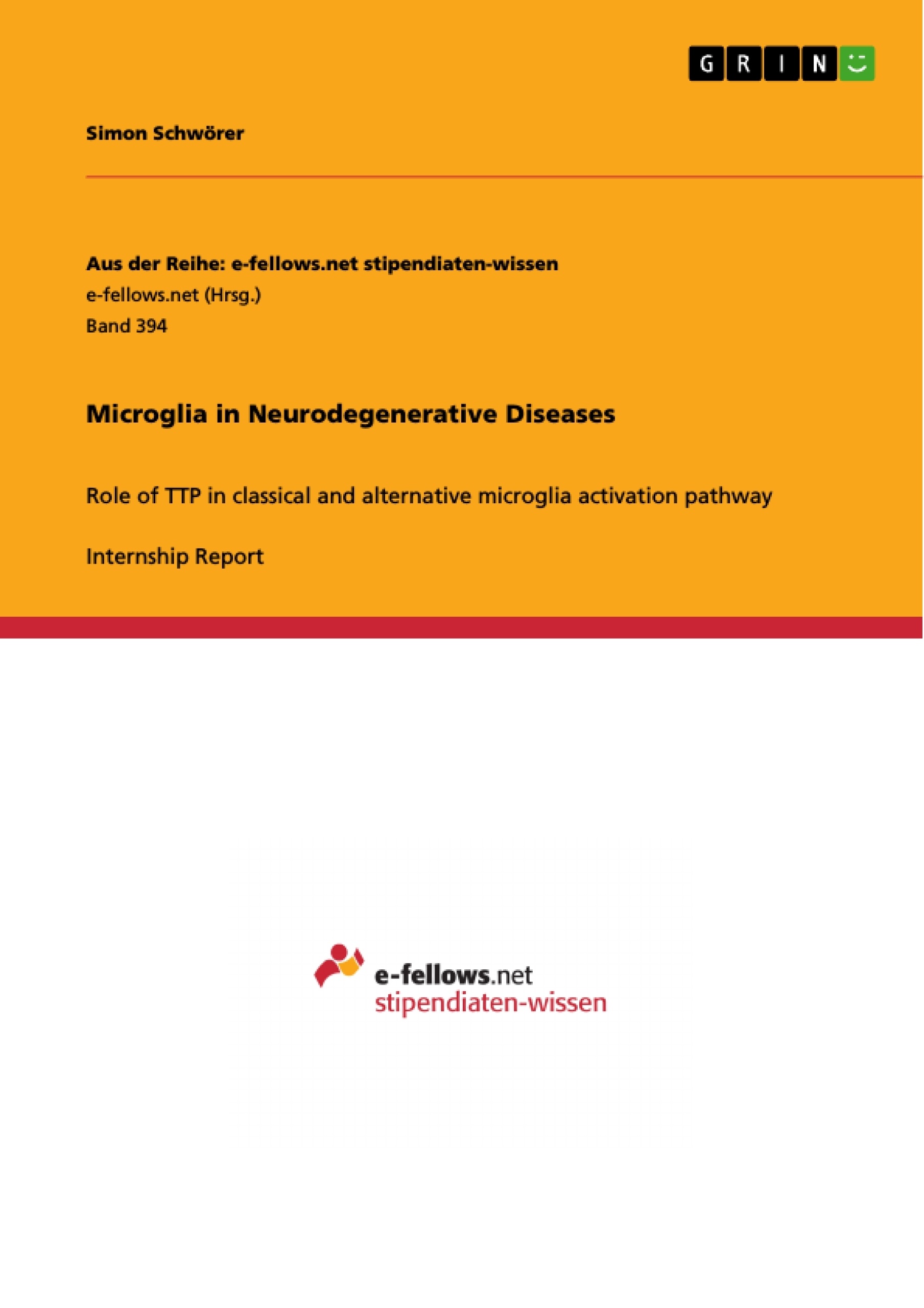Excerpt
INTRODUCTION
Microglia activation plays a crucial role in neurodegenerative diseases. There are at least two distinct ways of microglia activation, the classical lipopolysaccharide (LPS) induced pathway leading to secretion of pro-inflammatory cytokines and inflammation as well as the alternative interleukin-4 (IL-4) induced pathway resulting in increased wound healing and tissue repair (Figure 1). It is known that the anti-inflammatory alternative pathway is competent to dampen the inflammatory effects of the classical microglia activation, as IL-6 and tumor necrosis factor-α (TNF-α) levels of LPS-stimulated microglia were remarkably reduced after additional excitation of the alternative activation of microglia (Ferger et al., 2010). This effect could be achieved by the use of particular RNA binding proteins.
illustration not visible in this excerpt
Figure 1: Classical and alternative activation pathways in microglia (Lacy-Hulbert et al., 2006).
An example for such RNA binding proteins would be tristetraprolin (TTP). TTP is binding to AU-rich elements (ARE) in the 3’ untranslated region of mRNA molecules and promotes decay of ARE-containing transcripts by directing them to the exosome for rapid mRNA degradation (Figure 2). An exemplary indicator for TTP activity is TNF-α, a pro- inflammatory cytokine which is upregulated in inflammatory processes and possesses an AU- rich domain in its mRNA. Binding of TTP is leading to a decrease of TNF-α mRNA. Concurrently with a production of inflammatory cytokines, after LPS stimulation the expression of TTP is increased. However, mRNA of inflammatory cytokines is rescued from TTP mediated decay by activation of p38-MK2 kinases via LPS, leading to phosphorylation of TTP, thus recruiting 14-3-3 proteins. This family of proteins can hinder interaction of TTP with the decay machinery, resulting in a stabilization of the respective mRNA. Besides, TTP/14-3-3 complexes were shown to displace TIA-1 from ARE-containing transcripts, thereby preventing translational silencing (Anderson, 2008).
illustration not visible in this excerpt
Figure 2: Post-transcriptional control of cytokine production by TTP (modified after (Anderson, 2008)).
The aim of our research was to ascertain a possible participation of TTP in the IL-4 induced alternative activation of microglia, thereby potentially explaining the dampening effect on the inflammatory pathway. Therefore we compared TTP levels of microglia treated with IL-4, LPS as well as a combination of IL-4 and LPS on the protein level applying western blot analysis.
Since there was a lack of microglial cells and secretion of pro-inflammatory cytokines can be observed in astrocytes as well, we were mainly performing our further experiments with astroglia (Lisi et al., 2011).
As TTP can strongly alter the amounts of several mRNA molecules in cells, TTP is necessary to be keenly controlled. Indeed there exist several pathways which are increasing or decreasing TTP function or expression levels, but only little is known about the respective molecular mechanisms.
Elucidating proteins involved in this process was a further aim of our studies. One of those would be 5' adenosine monophosphate-activated protein kinase (AMPK) which plays an important role in cellular energy homeostasis. Besides by AMP, AMPK activity can be also pharmacologically triggered by 5-Aminoimidazole-4-carboxamide ribotide (AICAR), an intermediate in the generation of inosine monophosphate, through generation of an AMP analogue (Corton et al., 1995). However, AMPK function also implicates inhibition of mammalian target of rapamycin (mTor) signaling (Inoki et al., 2003). Since blocking mTor activity by rapamycin was reported to increase the expression of TTP, we thus suggest that AMPK agonist AICAR shall be able to increase TTP levels as well (Lisi et al., 2011) (Figure 3). To test this hypothesis, cells were stimulated with AICAR.
illustration not visible in this excerpt
Figure 3: Proposed connection between TTP and AMPK signaling (design based on (Anderson, 2008; Inoki et al., 2003)).
[...]
- Quote paper
- Simon Schwörer (Author), 2012, Microglia in Neurodegenerative Diseases, Munich, GRIN Verlag, https://www.grin.com/document/190962
Publish now - it's free






















Comments